The Zalman Z9 Neo Case Review
by E. Fylladitakis on May 20, 2016 9:00 AM EST- Posted in
- Cases/Cooling/PSUs
- Zalman
- ATX
- Case
The Exterior of the Zalman Z9 Neo
The Zalman Z9 Neo sports a modern design, with the company trying to balance it between elegance and aggression. Measuring 49 cm tall, 20.5 cm wide and 48.2 cm deep (19.3 × 8.1 × 19 in), resulting to a volume of 48.4 liters, the size Zalman Z9 Neo is relatively small for a midi ATX tower case. It significantly smaller than cases designed for high thermal performance, such as the Riotoro CR1280 (28.1% larger) and the Cooler Master MasterCase 5 (36.2% larger). It is about the same size as the Corsair 400Q (12.4% smaller), which lacks any external drive bays. We received the white version of the Z9 Neo, which still has a black frame surrounding the faceplate and interior.
11.2 oz (330 ml) can inserted as size referenceThe faceplate door opens from left to right, revealing a black plastic fascia with two 5.25” drive slots. Zalman installed a thin layer of sound absorbing material to the inside of the door.
In order to reach the front panel intake filter, the entire front panel needs to be removed. This is an easy task, as the panel can be simply pulled off in an instant. However, the front intake filter is nothing more than a nylon mesh and cannot be removed. It will have no effect on smaller dust particles and the only way to effectively clean it, without bending its metallic holders, is to use a vacuum cleaner directly on the case.
The front I/O ports and buttons are at the top side of the front panel, on the black plastic frame that surrounds it. Starting from left to right, we can see a large power button with a LED ring, a small round reset switch, two 3.5mm headphone jacks, two USB 2.0 ports and two USB 3.0 ports. Simple rubber inserts have been installed into the USB ports, to prevent dust from accumulating. Having to remove them each time a USB device is going to connect can become annoying for some users, plus these inserts are so small that they are almost begging to get lost.
A look at the rear of the Zalman Z9 Neo reveals that the PSU compartment is located at the bottom, a common design nowadays. We can also see the 120 mm rear exhaust fan and notice that it cannot be replaced by a 140 mm fan, which was also hinted by the specifications of the case, as it is too narrow. There are no holes for cables or liquid cooling hoses.
The top panel of the Zalman Z9 Neo is made of plastic, not metal. It has vents on the sides and on the top. What looks like a cover above the two top exhaust fans cannot be removed, with the exception of its semi-transparent smoked acrylic surround. Zalman claims that removing this surround can improve the thermal performance of the case, but we can assess that its removal will have a marginal impact on the airflow impedance of the fans.
The Zalman Z9 Neo stands on four plastic feet with rubber anti-slip pads installed. The feet are particularly tall for a case that has limited underside ventilation (only for the PSU). A nylon filter can be seen covering the PSU intake, which can be removed from the back of the case.




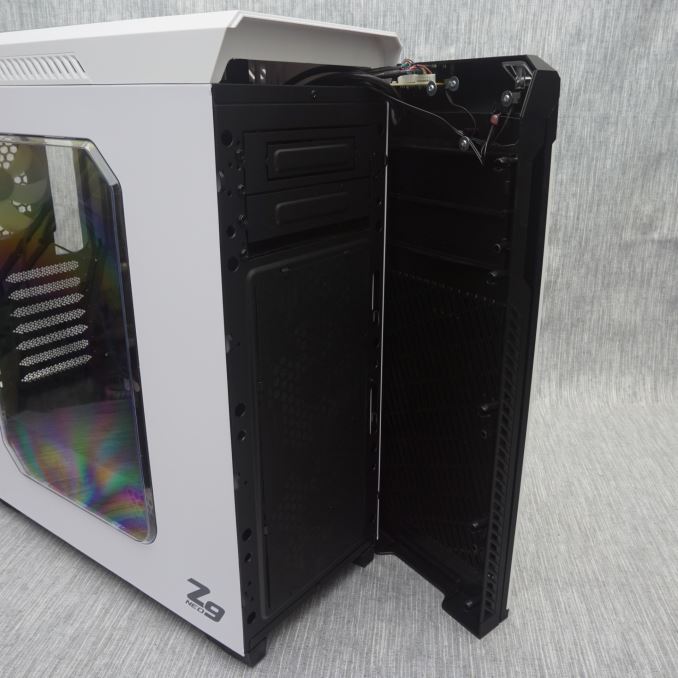
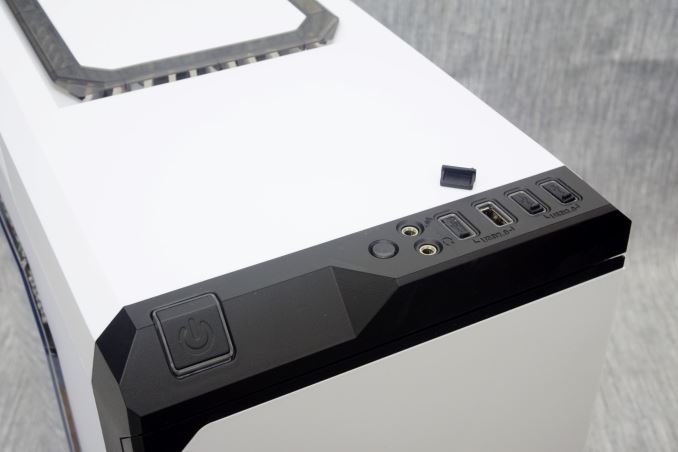
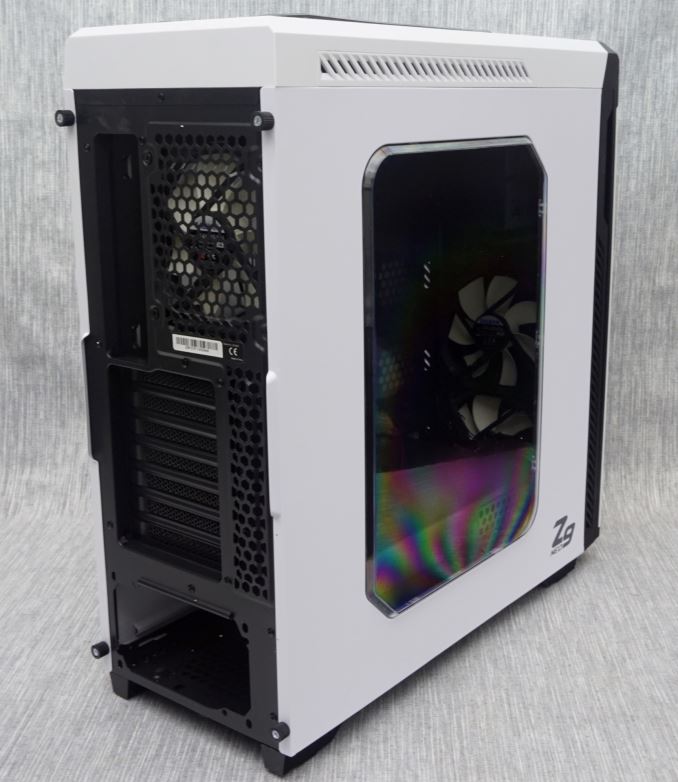
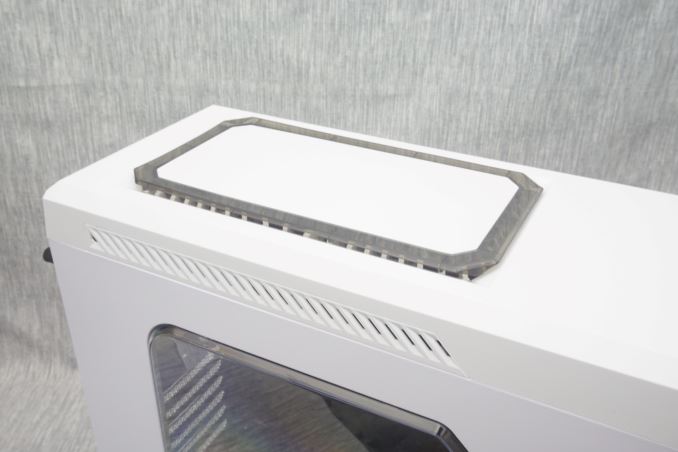
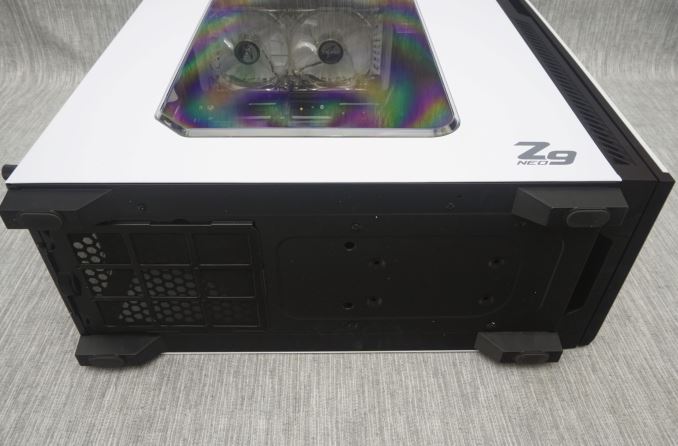








30 Comments
View All Comments
Azethoth - Monday, May 23, 2016 - link
I still buy a big case so I can have a bunch of 200mm fans. Big and slow = quiet but good cooling. It is pretty empty in there these days though. Although 64gb of 2800 RAM sure made that empty feeling go away quickly once the lid closed.vpr - Sunday, May 29, 2016 - link
Pre-Note: I do not work for this company, just been following their progress a lot.The Kimera Industries Cerberus might be what you're looking for - http://www.kimeraindustries.com/#main-hero
They had a Kickstarter which failed, but that opened up some new opportunities. According to their forums which I've kept up with they're working out some final details before signing the paperwork and announcing the details as to what's happening next.
There's even talks of a possible ATX variant which looks incredibly small for what it offers.
The problem is part selection though more so than case selection. It's a chicken and egg problem though as power users don't support mATX because the options are lacking, yet manufactures don't put a lot of money into mATX because the power users aren't interested.
Impulses - Friday, May 20, 2016 - link
I'd argue that people jamming 4-5 drives into their case is faster than SLI at this point, yet every ATX case seems destined to have room for lots of drives...I'd love to see a slimmer ST Raven or Corsair Air 540 would, lose the drive cages but keep the straight airflow and room for enthusiast SLI/water configs.
There's still a lot of unexplored ATX form factors IMO.
erple2 - Friday, May 20, 2016 - link
I didn't realize that anyone made PCIe soundcard anymore, other than for some specialized applications, and sli/xfire hasn't really been worth the hassle IMO. Now that m.2 is pretty standard, I'm not sure what a PCIe SSD buys you anymore. I'd like a mATX case that didn't stink. My big storage is in another box attached via Ethernet, so having 5 drives in my case is too much hassle. mATX still has full features mobos (4 ram slots, at least two PCIe slots), so that's all the expandability that I need or want. And I expect that the vast majority of people agree. It pains me when people buy a giant Dell box in ATX size, using iGPU. I think I've said enough.Azethoth - Monday, May 23, 2016 - link
I grew up on sound cards in my builds. But 5 or 10 years ago I got two useless sound cards in a row. Turns out MS changed windows sound and made those guys obsolete. Then some new sound guys came out with high end cards and op amps, whatever that is etc. Lack of driver support made me finally spit on them and now I just enjoy the built in ROG sound on the MB.Azethoth - Monday, May 23, 2016 - link
Oh yeah, and who cares about sound cards when it's just a digital stream going straight to your computer's surround receiver. The new sound algorithms track individual sounds through the 3d geometry which kind of means sound belongs in the GPU anyways.Murloc - Saturday, May 21, 2016 - link
what's the point of SLI support if you're not using it?It's not something most people ever use anyway.
I've never owned a mobo bigger than mATX and I'm an average value-for-money gamer, and I didn't do it on purpose.
My case supports ATX motherboards but I don't need them when I'm aiming for the cheapest motherboard that has what I need (the chipset).
For a media PC I'd go with mITX.
PCIe SSDs are a rarity, PCIe sound cards are either for obscure use cases or for noobs, real speakers need an external amplifier anyway, and AVRs can get digital audio through HDMI and do processing themselves with Audissey and all that jazz, which a consumer sound card will never do (idk about specialized uses).
JoeyJoJo123 - Wednesday, May 25, 2016 - link
And for the average gaming PC build (which is the use-case most enthusiasts who bother to build a PC have) you see nothing more than a single GPU in the PCI-E slots, and usually less than 4 SATA drives.The usual difference between MicroATX and ATX is that one has 4 PCI-E slots and the latter has space for 5, 6, sometimes 7 slots, and ATX usually has ~2 more SATA ports, although it's still really common to find MicroATX boards these days with the standard 6 SATA ports.
You can still do Crossfire/SLI with a MicroATX.
You can still have an array of disks with MicroATX.
MiniITX's real problem is that most people don't understand the form factor and think it's a limitation rather than a freedom of case choice and additional form-factors and sizes. Additionally, for first-time builders, small MiniITX cases are incredibly difficult builds, due to stressful cable management issues, and the order you install items in the case actually REALLY matters, because otherwise, everything just won't go in right.
techxx - Sunday, May 22, 2016 - link
I think a lot of consumers are just uneducated on how legacy and obsolete ATX has been for the past few years. Like someone else said, I'd bet only 1-3% of consumers need anything more than ITX. SLI/Crossfire has never really been worth it and the needs for expansion cards is virtually non-existent.ninjaquick - Sunday, May 22, 2016 - link
I use 5 slots on my motherboard for legacy hardware, but otherwise agree that most users don't need larger than mATX. That said, it doesn't cost much more to build a low cost full atx case, and doing so widens the market a brand can reach, which is critical for the low margin low end.